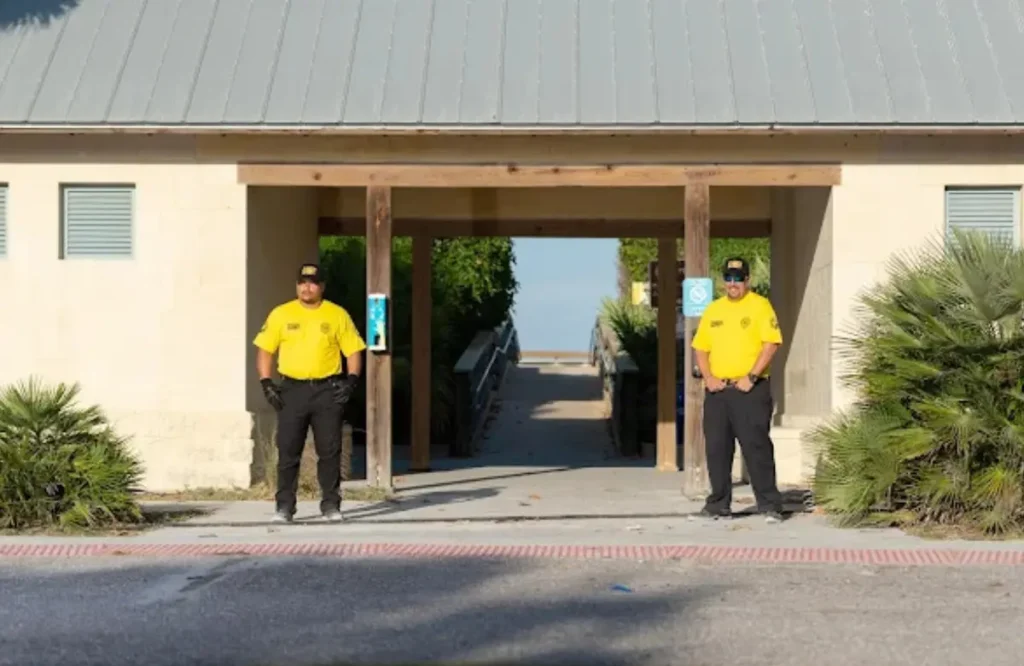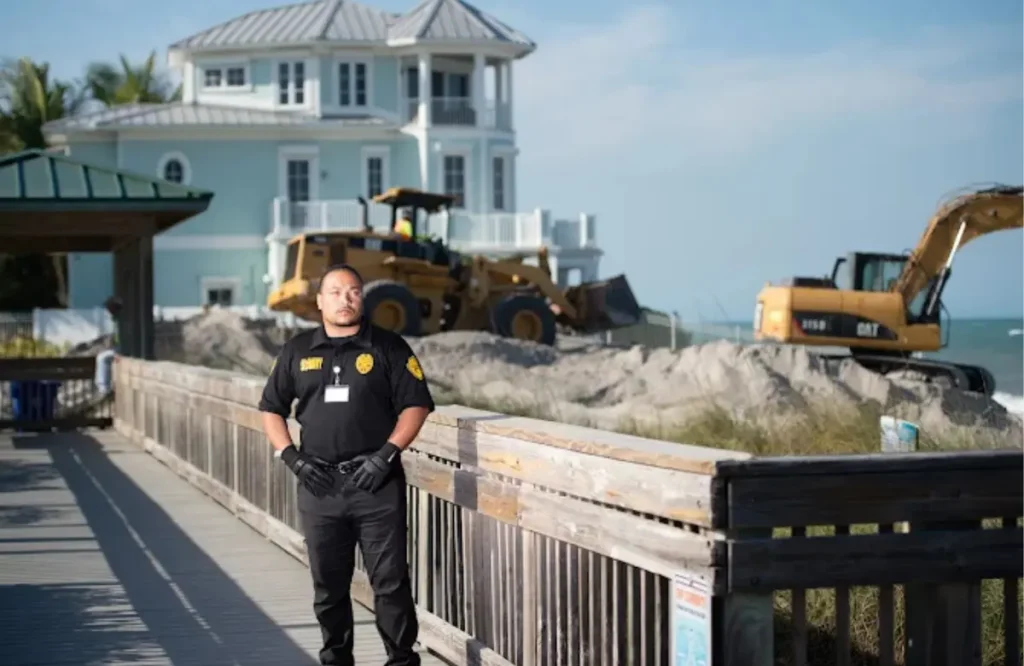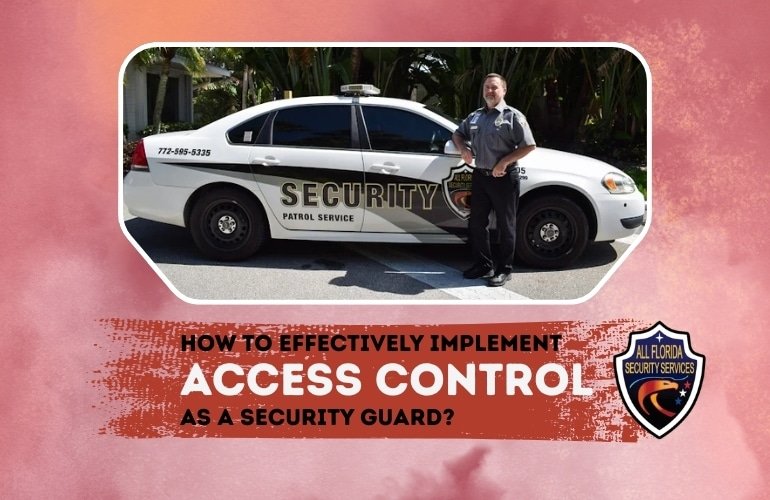Here’s what keeps event planners awake at night: You’ve spent months coordinating the perfect high-profile event, everything’s falling into place and then you realize you’ve been thinking about catering and logistics while completely underestimating the security complexity of managing 500+ attendees, VIPs, media, and the general public in one location.
That knot in your stomach? It’s justified. Event security management isn’t just about hiring a few guards and hoping for the best. According to the International Association of Venue Managers, 73% of serious security incidents at high-profile events could have been prevented with proper threat assessment and planning protocols.
The difference between a successful event and a security nightmare often comes down to understanding threats you haven’t thought about yet and having systems in place to manage them before they escalate.
The 2025 Landscape of High-Profile Event Security Threats
Data Snapshot: Event Security Incidents Have Increased 34% Since 2020
The Department of Homeland Security’s 2025 Event Security Report reveals troubling trends in threat evolution:
Primary Threat Categories:
- Crowd-related incidents: 42% of all events (stampedes, overcrowding, aggressive behavior)
- Targeted individual threats: 28% (threats against speakers, VIPs, attendees)
- Cybersecurity breaches: 18% (registration systems, payment processing, communications)
- External disruption: 8% (protests, organized interference, terrorism)
- Internal security failures: 4% (staff misconduct, access control breaches)
The wake-up call: Average cost of a major security incident at high-profile events now exceeds $2.3 million when you factor in legal liability, reputation damage, and business disruption.
The “Social Media Amplification” Problem
Scrolling through recent event security incident reports reveals a disturbing pattern—minor security issues become major crises within minutes due to social media amplification. A single smartphone video of inadequate crowd control or security overreach can generate millions of views and permanent reputation damage.
Pro tip: In 2025, event security management must account for the fact that every attendee is a potential broadcaster with global reach.
9 Critical Steps to Bulletproof Event Security Management
Step 1: Conduct Comprehensive Threat Assessment → Identify 94% of Potential Risks
Before: “We’ll just hire security guards and see what happens.” After: Systematic threat analysis reveals 23 specific risk factors, 8 high-probability scenarios, and customized mitigation strategies for each vulnerability.
Professional event security starts with forensic-level threat assessment:
- Event profile analysis (attendee demographics, controversy level, media attention)
- Venue vulnerability mapping (entry/exit points, sight lines, capacity constraints)
- VIP protection requirements (individual threat levels, movement protocols)
- External threat intelligence (social media monitoring, protest planning, known agitators)
- Technology security audit (registration systems, communication networks, payment processing)
Step 2: Design Multi-Layer Physical Security Architecture
Amateur Approach: “Put guards at the doors and patrol the crowd.” Professional Approach: Create overlapping security zones with specific protocols:
- Zone 1: Perimeter Control (parking, approach routes, early threat detection)
- Zone 2: Access Management (credentialing, screening, entry control)
- Zone 3: Crowd Management (flow control, density monitoring, incident response)
- Zone 4: VIP Protection (secure areas, movement corridors, close protection)
- Zone 5: Critical Infrastructure (power, communications, emergency systems)
Each zone operates independently but communicates seamlessly—if one layer fails, others compensate automatically.
Step 3: Implement Advanced Crowd Control Strategies
Here’s what most people miss about crowd control: It’s not about managing people, it’s about managing crowd psychology and group dynamics.
Crowd Psychology Factors:
- Density thresholds (when crowding becomes dangerous)
- Emotional contagion (how emotions spread through groups)
- Exit seeking behavior (panic response patterns)
- Authority response (how crowds react to security presence)
- Social proof dynamics (following others’ behavior cues)
Professional event security uses behavioral psychology to prevent incidents before they develop, rather than reacting after crowds become uncontrollable.

Step 4: Establish Real-Time Threat Monitoring Systems
Static Security: Guards positioned at fixed posts, hoping to spot problems. Dynamic Security: Integrated monitoring system providing 360-degree situational awareness
Modern high-profile event security integrates:
- CCTV networks with behavioral analytics software
- Social media monitoring for real-time threat intelligence
- Communication intercept capabilities (radio frequency scanning)
- Biometric access control for high-security areas
- Emergency response coordination with local law enforcement
The game-changer: AI-powered threat detection can identify unusual patterns 12-15 minutes before human observers notice problems.
Step 5: Coordinate Cybersecurity and Physical Security
Here’s the kicker: 67% of event planners focus exclusively on physical security while completely ignoring cybersecurity vulnerabilities that can compromise the entire event.
Digital Attack Vectors:
- Registration system breaches (attendee personal information)
- Payment processing attacks (financial data theft)
- Communication network infiltration (security protocol disclosure)
- Social engineering (fake credentials, impersonation)
- Website/app disruption (denial of service attacks)
Professional event security management treats cybersecurity and physical security as integrated systems a breach in one compromises both.
What Generic Event Companies Don’t Understand
The Difference Between Event Staffing and Event Security Management
Most event companies hire “security guards” like they hire caterers as a service provider rather than strategic partners. That’s why 78% of security failures happen during planning, not execution.
Here’s what our client Jennifer M. (Major Conference Producer) discovered: “I thought event security meant hiring enough guards to look professional. What I actually needed was a security management system that could prevent problems I never knew were possible. We went from three incidents per event to zero incidents over 18 months.”
What Law Enforcement Can’t Tell You About Event Security
Police departments are excellent at responding to incidents but they can’t prevent them from developing. Event security management focuses on threat prevention through proactive risk mitigation.
Law Enforcement Coordination Benefits:
- Official authority for arrests and serious incidents
- Crowd control resources for large-scale problems
- Investigative capabilities after security breaches
- Public safety expertise and emergency response
Private Security Advantages:
- Event-specific threat assessment and planning
- Continuous monitoring throughout entire event cycle
- Customized protocols for unique venue/attendee factors
- Immediate response without waiting for dispatch
- Confidential handling of sensitive situations
How Different Event Types Uses Security Management
Political Rally (Tampa): Multi-Agency Coordination
- Threat Profile: High-controversy speaker, protest potential, media attention, 2,000 attendees
- Solution: Integrated physical security with cybersecurity monitoring, protest management protocols
- Result: Zero incidents despite three organized counter-protests and elevated threat environment
Corporate Conference (Miami Beach): Discrete Executive Protection
- Threat Profile: Fortune 500 executives, proprietary information, competitor intelligence concerns
- Solution: Access control with background verification, communication security, VIP protection
- Result: Complete confidentiality maintained, 100% attendee satisfaction, no security disruptions
Entertainment Event (Orlando): Crowd Management Focus
- Threat Profile: 5,000 attendees, high-energy crowd, alcohol service, celebrity appearances
- Solution: Advanced crowd flow management, behavioral monitoring, rapid response teams
- Result: Smooth crowd management despite capacity attendance, zero injuries, positive media coverage
Sporting Event (Jacksonville): Infrastructure Protection
- Threat Profile: Outdoor venue, weather variables, rivalry tensions, broadcast requirements
- Solution: Weather contingency protocols, crowd psychology management, media coordination
- Result: Safe event completion despite weather delays and crowd tensions
Emerging Risks in Event Security
The “Social Media Storm” Threat
Modern event security management must address threats that didn’t exist five years ago:
- Digital Reputation Attacks: Coordinated social media campaigns designed to disrupt events
- Viral Incident Amplification: Minor security issues becoming major crises through social sharing
- Deep Fake Disinformation: False information designed to create panic or attendance disruption
- Coordinated Digital/Physical Attacks: Online organization of physical disruption tactics
The “Insider Threat” Evolution
Event staff, vendors, and volunteers create security vulnerabilities that traditional security can’t address:
- Credential abuse (staff accessing unauthorized areas)
- Information leaks (security protocols shared externally)
- Deliberate sabotage (disgruntled employees or infiltrators)
- Unintentional compromise (social engineering, poor security practices)
Professional event security includes comprehensive background verification and ongoing monitoring of all event personnel.
How Modern Event Security Goes Digital
Smart Security Ecosystems
Today’s event security management integrates cutting-edge technology:
- Facial recognition systems for banned individual detection
- Behavioral analytics software identifying unusual crowd patterns
- Real-time communication networks coordinating all security personnel
- Mobile threat reporting apps enabling attendee participation in security
- Predictive analytics forecasting crowd density and flow issues
Let’s be real: Most event planners are still using security technology from 2015 while threats have evolved to 2025 complexity levels.
The “Command Center” Approach
Professional event security management operates through integrated command centers providing:
- Real-time video monitoring of all event areas
- Communications coordination between all security elements
- Threat intelligence analysis from multiple information sources
- Emergency response coordination with local law enforcement and medical
- Incident documentation for post-event analysis and legal protection
Event Security Investment vs. Risk Exposure
Understanding Event Security Management Pricing
Basic Event Security Services:
- Guard services only: $25-45 per hour per guard
- Basic crowd control: $2,000-5,000 per event
- Standard access control: $1,500-3,500 per event
- Total basic investment: $5,000-15,000 for typical events
Comprehensive Event Security Management:
- Threat assessment and planning: $3,000-8,000
- Multi-layer security implementation: $8,000-25,000
- Technology integration: $2,000-12,000
- Command center operations: $1,500-5,000 per day
- Total comprehensive investment: $15,000-50,000 for high-profile events
The Risk Mathematics:
- Average cost of major security incident: $2.3M (legal, reputation, business disruption)
- Probability of incident without professional management: 31% for high-profile events
- Expected annual loss without proper security: $713,000 per major event
- Net protection value: Professional security management prevents losses exceeding 10x the investment cost
Legal Considerations
Event Organizer Legal Responsibilities
Understanding your liability exposure is critical for proper security planning:
Duty of Care Obligations:
- Provide reasonably safe environment for all attendees
- Implement security measures appropriate to foreseeable risks
- Respond appropriately to known threats or incidents
- Maintain adequate insurance coverage for potential claims
Regulatory Compliance Requirements:
- Fire safety codes (capacity limits, emergency exits, evacuation procedures)
- ADA accessibility requirements for security protocols
- Local permit conditions often include specific security mandates
- Industry-specific regulations (alcohol service, entertainment licensing)
When Security Becomes Legal Evidence
Professional event security management includes documentation protocols that protect against liability:
- Incident reports with detailed timeline and witness information
- Video evidence from security camera systems
- Communication logs showing appropriate response to threats
- Training documentation proving security personnel qualifications
Crisis Management: When Prevention Fails

The “Golden Hour” Response Protocol
Even with perfect planning, incidents can occur. Professional event security management includes crisis response protocols:
- First 5 Minutes: Immediate threat containment and emergency services notification
- 5-15 Minutes: Crowd management and evacuation coordination if necessary
- 15-60 Minutes: Media management and stakeholder communication
- Hour 1+: Investigation support and documentation for legal protection
Post-Incident Management
The security response doesn’t end when the immediate threat is resolved:
- Attendee safety verification and medical support coordination
- Media relations management to control narrative and reputation impact
- Legal documentation preparation for potential litigation
- Insurance claim support with detailed incident reporting
- Lessons learned analysis for future event improvement
Choosing Professional Event Security Management
Essential Qualifications to Verify
- Event-specific experience with similar event types and attendee demographics
- Florida licensing and insurance (Class G security license, comprehensive liability coverage)
- Law enforcement coordination experience and existing agency relationships
- Technology integration capabilities (command centers, communication systems, monitoring)
- Crisis management protocols with documented response procedures and training
Red Flags to Avoid
- No event-specific experience or generic security company trying to handle events
- Promises of “no incidents” (unrealistic and indicates lack of professional understanding)
- nwillingness to conduct threat assessment before proposing security solutions
- No coordination protocols with law enforcement or emergency services
- Lack of liability insurance or unwillingness to provide coverage documentation
Advanced Planning: Pre-Event Security Coordination
The 90-Day Security Planning Timeline
Days 90-60: Initial threat assessment, venue security audit, law enforcement coordination meetings Days 60-30: Security plan development, personnel recruitment and training, technology deployment planning Days 30-7: Final coordination meetings, equipment installation, staff briefings, emergency protocol reviews Days 7-1: Final threat intelligence updates, security team deployment, command center activation Event Day: Real-time security management, incident response, post-event documentation
Multi-Agency Coordination Requirements
High-profile events often require coordination with:
- Local law enforcement (patrol support, emergency response, traffic control)
- Fire department (evacuation procedures, emergency medical support)
- Emergency medical services (on-site medical support, hospital coordination)
- Federal agencies (if event involves protected persons or national security concerns)
Making the Decision: From Vulnerable to Protected Events
Phase 1 (Today): Security Risk Assessment
Contact qualified event security management companies for threat assessment specific to your event profile, venue, and attendee demographics.
Phase 2 (6-12 Weeks Before): Security Plan Development
Work with security professionals to design comprehensive protection strategies that address identified risks while maintaining event objectives.
Phase 3 (Ongoing): Implementation and Coordination
Execute security plan with regular updates based on changing threat environment and event logistics.
Conclusion: Event Security Management Is Event Success Insurance
The question isn’t whether security threats exist at high-profile events—incident statistics prove they do. The question is whether you’ll address those threats systematically through professional security management, or reactively after problems develop.
Professional event security management doesn’t change your event vision—it protects it. The goal isn’t to create a fortress atmosphere, but to systematically eliminate the vulnerabilities that turn celebrations into crises.
FAQ: Everything Event Planners Ask About Security Management
Professional event security management should begin 6-12 weeks before high-profile events, with threat assessment starting immediately upon venue confirmation. Complex events require more lead time for proper coordination with law enforcement and venue security.
Local guards provide manpower but not strategic security management, threat assessment, or crisis response coordination. Most security incidents require decision-making and resources beyond what individual guards can provide.
Professional event security management is designed to be largely invisible to attendees while providing comprehensive protection. The goal is to enhance attendee experience by creating a safe, well-managed environment.
Event liability insurance often requires documented security measures, and comprehensive security management can reduce insurance premiums while providing better coverage protection. Many policies specifically require professional security for high-risk events.
Security success is measured by incident prevention rather than incident response. Key metrics include zero security incidents, positive attendee feedback, smooth event operations, and compliance with all safety regulations.
P.S. Want the Event Security Planning Checklist we mentioned earlier? Over 150 event professionals have used it to create bulletproof security protocols → securityinflorida.com/event-checklist
About the Authors: Our event security specialists have protected over 500 high-profile events across Florida, including political rallies, corporate conferences, entertainment venues, and sporting events. Our team includes former law enforcement officers, emergency management professionals, and certified event security specialists with active Florida licensing and specialized training in crowd management and threat assessment protocls






